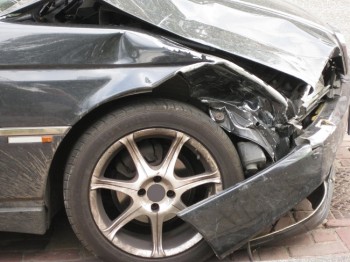The Financial Services Commission of Ontario calls it, quite simply, a “payer of last resort.” The provincial government set up the Motor Vehicle Accident Claims Fund (MVACF) as a way to extend its Statutory Accident Benefits Schedule (part of the no-fault system) to every scenario, no matter how unlikely or rare. If you’ve been injured in a car accident that falls outside of traditional scenarios, the MVACF may be able to help you. The MVACF may also be available to respond to a tort claim if the injury is caused by an uninsured motorist or an unidentified motor vehicle and injured party has no access to uninsured/unidentified motor vehicle coverage under any other automobile policy.
Hit and run accidents represent one of the more common uses of the MVACF: a scenario in which you have no insurer to whom you can submit a claim and the driver of the other vehicle is unknown. While Ontario law requires every driver to carry an auto insurance policy, an uninsured driver still has access to the fund for certain No-Fault Benefits following an injury – although they lose the right to sue for damages.
If the fleeing driver’s identity becomes known – say, from a license plate or surveillance camera – you would be able to file a claim for assistance through their insurer and the traditional Statutory Accident Benefits Schedule, not the MVACF. This keeps the Fund reserved for only very rare cases and leaves costs with the insurance company.
While it is often easier to determine when the MVACF is the proper payer for Statutory Accident Benefits, recent court decisions have restricted the circumstances where the MVACF is required to pay damages in a tort claim. It is now clear law in Ontario that any Insurer who pays Statutory Accident Benefits to a claimant is also the injured victim’s uninsured carrier for the purpose of a claim under the uninsured provisions of the standard auto policy and the Insurance Act. It is also clear that a tort claim must be brought against an insurer who insures a victim’s family member with a Family Protection Endorsement (O.P.C.F 44R). Instead of having recourse to the MVACF for the negligence of an uninsured driver, the victim will have to sue the family member’s “underinsurer”, if they reside in the same household.
Even after settling a tort claim with the MVACF, a Judgement must be obtained from the court and a subsequent Application and Assignment has to made to the Fund before payment is made; the process is complicated and time-consuming and the strict requirements are very carefully scrutinized by the Court and the Fund.
You may be entitled to much-needed benefits, even if the scenario appears unique. An experienced personal injury lawyer will guide you through the accident benefits claims process and a potential tort action involving the MVACF. Identifying the circumstances where the MVACF applies requires a review by an experienced personal injury lawyer. At Horowitz Injury Law, we have almost 35 years of experience of handling claims through the MVACF.




